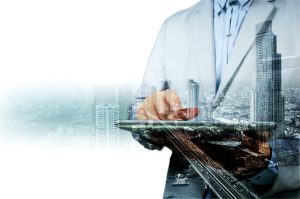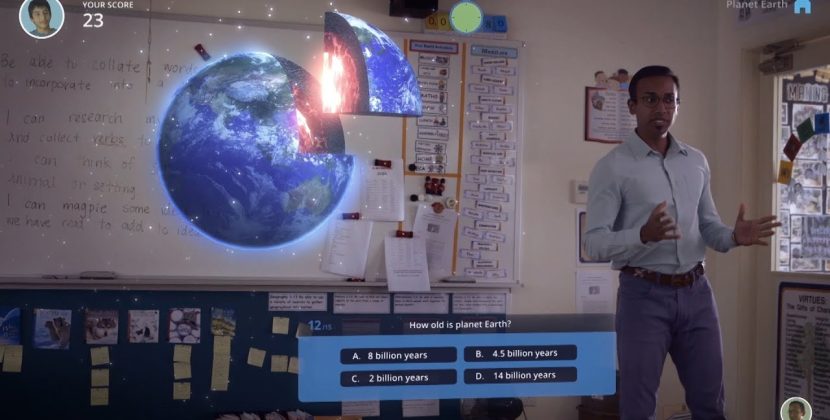
Our 2023 Tech Haul: A Glimpse into the Future
Introduction: Meet the Author
Hello, tech enthusiasts! I’m Alex, a freelance writer and a self-proclaimed tech geek. I’ve been following the latest tech trends and innovations for over a decade, and I love to share my insights and opinions with you. In this article, I will explore some of the most exciting and innovative tech trends and products that will shape our lives in 2023 and beyond. Whether you’re an early adopter, a curious observer, or a casual user, you’ll find something interesting and useful in this article. So, let’s dive in and see what the future holds for us!
Eyes to the Sky: Immersive Internet, AI Credibility, and Multicloud Management
One of the most fascinating and futuristic tech trends of 2023 is the immersive internet. This is the concept of creating a metaverse, a virtual world that is fully integrated with the physical world, where people can interact, work, play, and learn in a seamless and immersive way. Imagine being able to visit any place, meet any person, or experience any event in the virtual world, as if you were there in reality. Sounds amazing, right?
But how do we create such a metaverse? Well, it requires a combination of technologies, such as augmented reality (AR), virtual reality (VR), artificial intelligence (AI), cloud computing, 5G, and blockchain. These technologies enable us to create realistic and interactive virtual environments, connect them with the physical world, and ensure their security and scalability. Some of the applications of the immersive internet include entertainment, education, tourism, healthcare, and e-commerce.
However, creating and using the immersive internet also poses some challenges and risks. One of them is the credibility of AI. AI is a powerful tool that can enhance our virtual experiences, but it can also be used to manipulate, deceive, or harm us. For example, AI can generate fake or misleading content, such as deepfakes, synthetic media, or misinformation. AI can also influence our decisions, behaviors, or emotions, such as through personalized recommendations, nudges, or social bots. How do we know if we can trust AI, and how do we protect ourselves from its potential harms?
The answer lies in creating and implementing AI credibility frameworks, which are sets of principles, standards, and practices that ensure the transparency, accountability, and explainability of AI systems and their outcomes. These frameworks help us to understand how AI works, why it makes certain decisions, and what are the consequences of those decisions. They also help us to monitor, audit, and regulate AI systems, and to hold them responsible for any errors, biases, or harms they may cause.
Another challenge and opportunity of the immersive internet is the multicloud management. As the immersive internet relies on massive amounts of data and computing power, it requires the use of multiple cloud providers and services, such as AWS, Azure, Google Cloud, or Alibaba Cloud. However, managing multiple clouds can be complex, costly, and risky, as it involves different architectures, platforms, tools, and policies. How do we simplify multicloud management and optimize its benefits?
The solution is to use a layer of abstraction and automation that offers a single pane of control for multicloud environments. This layer, also known as multicloud orchestration, enables us to manage multiple clouds as one, by integrating, coordinating, and optimizing their resources, services, and operations. This way, we can reduce the complexity, cost, and risk of multicloud management, and improve its performance, reliability, and security.
Feet Firmly on the Ground: Tech Workforce, Decentralized Systems, and Mainframe Modernization
While the immersive internet takes us to the sky, there are also some tech trends that keep us grounded in reality. One of them is the tech workforce. As technology evolves and transforms every aspect of our lives, it also creates new demands and opportunities for tech workers. However, finding and retaining tech talent can be challenging, especially in a competitive and dynamic market. How do we address the tech talent gap and ensure the quality and diversity of the tech workforce?
The answer is to focus on skill-building, tap creative sources of talent, and provide a compelling talent experience. Instead of competing for a limited supply of tech workers, organizations can invest in upskilling, reskilling, and cross-skilling their existing employees, as well as hiring and training new ones. They can also tap into creative sources of talent, such as freelancers, gig workers, crowdsourcing platforms, or online communities. Moreover, they can provide a compelling talent experience, by offering flexible, remote, and hybrid work options, as well as rewarding, engaging, and inclusive work environments.
Another tech trend that keeps us grounded in reality is the decentralized systems. In an environment of decreasing confidence in civic and business institutions, decentralized, “trustless” systems based on blockchain could help rebuild trust. Blockchain is a distributed ledger technology that records and verifies transactions and interactions among various parties without intermediaries. Blockchain enables more secure, transparent, and efficient transactions and interactions, as well as new forms of value creation and exchange.
Some of the applications of decentralized systems include cryptocurrencies, smart contracts, decentralized finance, decentralized identity, decentralized web, and decentralized governance. These applications allow us to create and use digital assets, services, and platforms that are not controlled by any central authority, but by the collective consensus of the network participants.
A final tech trend that keeps us grounded in reality is the mainframe modernization. Mainframes are powerful computers that process large volumes of data and transactions for enterprises, such as banks, airlines, or governments. Mainframes are known for their reliability, scalability, and security, but they are also often seen as outdated, inflexible, and incompatible with emerging technologies. How do we bring mainframes into the modern era and leverage their potential for digital transformation?
The answer is to connect and extend mainframes to emerging technologies, such as cloud, AI, or blockchain, by using various methods, such as APIs, microservices, containers, or hybrid cloud. These methods enable us to integrate mainframes with other systems and platforms, and to access and use their data and functionality in new and innovative ways. This way, we can leverage the power, reliability, and scalability of mainframes, while improving their agility, accessibility, and compatibility.
Table: The Top 10 Tech Trends of 2023
| Tech Trend | Description | Impact |
|---|---|---|
| Immersive Internet | The metaverse and other immersive virtual experiences are becoming valuable enterprise tools for new business models and training and collaboration | Enables more engaging and interactive experiences for customers and employees across different domains and locations |
| AI Credibility | The value of AI is indisputable, but the question of how to best use it often boils down to how much workers and end users trust AI tools | Requires more transparency, accountability, and explainability of AI systems and their outcomes |
| Multicloud Management | To simplify multicloud management, many enterprises are turning to a layer of abstraction and automation that offers a single pane of control for multicloud environments | Reduces complexity, cost, and risk of managing multiple cloud providers and services |
| Tech Workforce | Instead of competing for a limited supply of tech talent, organizations can focus on skill-building, tap creative sources of talent, and provide a compelling talent experience | Enhances the flexibility, diversity, and productivity of the tech workforce and fosters a culture of learning and innovation |
| Decentralized Systems | In an environment of decreasing confidence in civic and business institutions, decentralized, “trustless” systems based on blockchain could help rebuild trust | Enables more secure, transparent, and efficient transactions and interactions among various parties without intermediaries |
| Mainframe Modernization | Enterprises are increasingly bringing mainframes into the modern era by connecting and extending them to emerging technologies to drive digital transformation | Leverages the power, reliability, and scalability of mainframes while improving their agility, accessibility, and compatibility |
| 5G and Beyond | The fifth generation of mobile networks is enabling faster, smarter, and more reliable connectivity for devices, applications, and services | Supports the growth and innovation of the internet of things, edge computing, and immersive internet |
| Quantum Computing | The next frontier of computing is harnessing the power of quantum physics to perform complex calculations and operations that are beyond the reach of classical computers | Solves challenging problems in fields such as cryptography, optimization, simulation, machine learning, and chemistry |
| Biotechnology | The convergence of biology and technology is creating new possibilities for improving human health, wellness, and performance | Advances the fields of genomics, synthetic biology, bioengineering, and biomanufacturing |
| Green Technology | The increasing awareness and urgency of environmental issues are driving the development and adoption of technologies that reduce the negative impact of human activities on the planet | Promotes the use of renewable energy, clean transportation, smart cities, and circular economy |

Conclusion: The Future is Now
As you can see, the tech trends of 2023 are diverse, exciting, and impactful. They offer us a glimpse into the future, where technology will enable us to create, connect, and collaborate in new and amazing ways. However, they also pose some challenges and risks, such as ethical, social, and environmental implications. Therefore, we need to be mindful and responsible in using and developing these technologies, and ensure that they serve the greater good of humanity and the planet.









